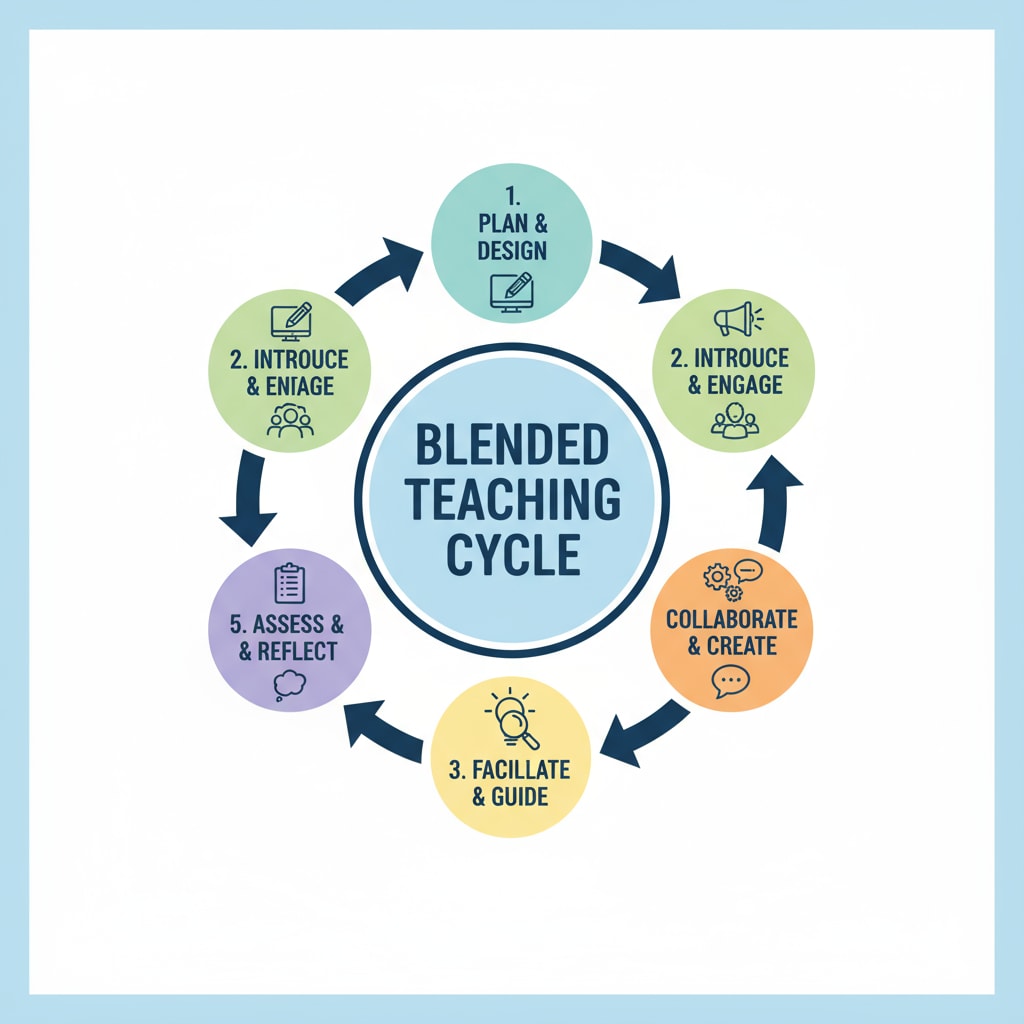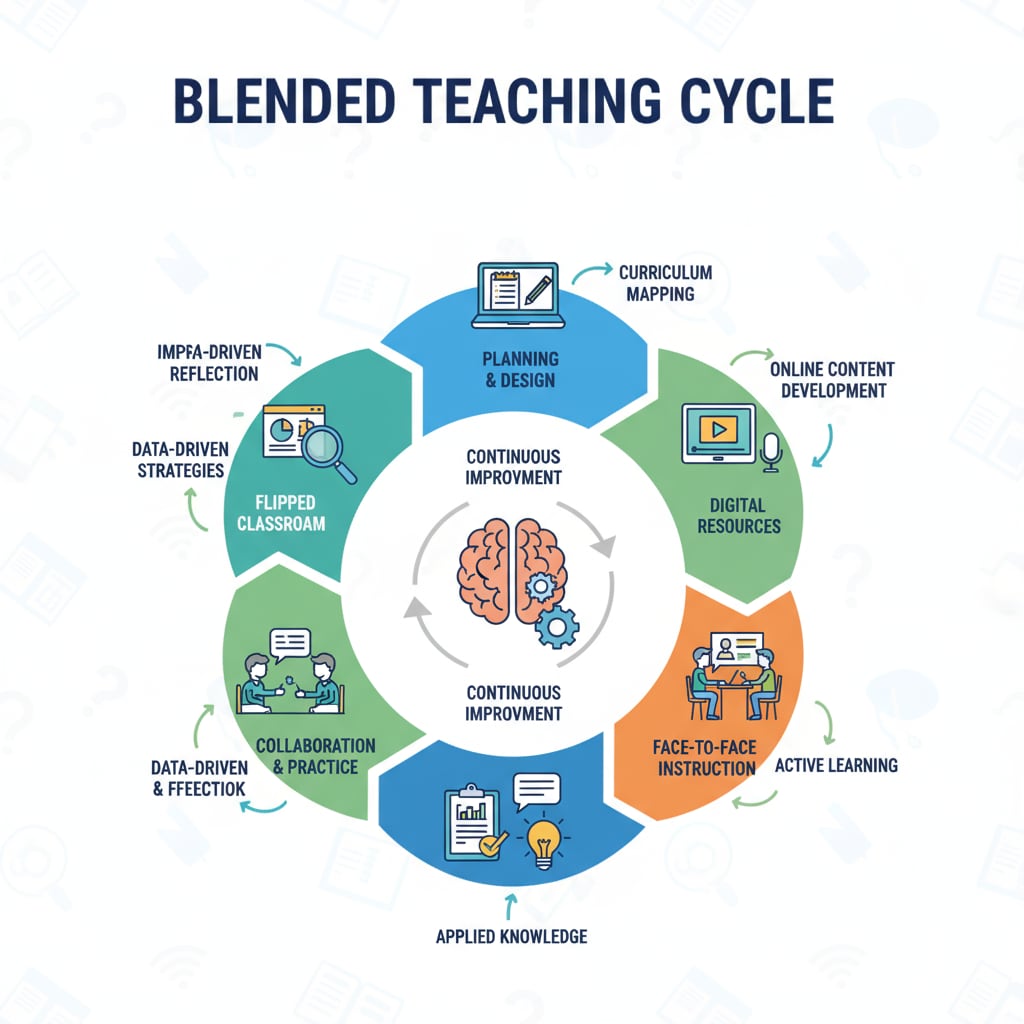The Blended Teaching Cycle Theory, a fascinating concept that combines the best of instructional and guiding teaching methods, has revolutionized the educational landscape by presenting a unique five-step educational model. This theory is not only about imparting knowledge but also about fostering an environment where students can actively engage in their learning journey, achieving a perfect balance between collective guidance and individualized learning.

As educators in the K12 system strive to meet the diverse needs of their students, understanding the structure and theoretical basis of this theory becomes crucial.
The Structural Framework of the Blended Teaching Cycle Theory
The Blended Teaching Cycle Theory is built upon a well-defined five-step model. The first step focuses on setting clear learning objectives. These objectives serve as a roadmap for both the teacher and the students, outlining what is to be achieved. For example, in a math class, the objective could be for students to master a specific algebraic concept.
The second step involves instructional delivery. Here, the teacher imparts knowledge through traditional methods like lectures or demonstrations. This is the phase where the teacher shares the necessary information and skills.
The third step is the exploration phase. Students are given the opportunity to explore the topic on their own, through activities such as group discussions, research, or hands-on experiments. This encourages critical thinking and self-discovery.
The fourth step is the application phase. Students apply what they have learned in real-world or simulated scenarios. This helps them solidify their understanding and develop practical skills.
The final step is the reflection and feedback phase. Both students and teachers reflect on the learning process, and feedback is provided to improve future learning. This cycle repeats, creating a continuous learning loop.

Theoretical Foundations of the Blended Teaching Cycle Theory
The Blended Teaching Cycle Theory draws its strength from the educational ideas of renowned psychologists such as Bandura, Vygotsky, and Piaget.
Albert Bandura’s social learning theory emphasizes the role of observation and imitation in learning. In the context of the blended teaching cycle, the instructional delivery phase can incorporate elements of modeling, where the teacher demonstrates correct behaviors or problem-solving techniques for students to observe and learn from.
Lev Vygotsky’s zone of proximal development theory suggests that learning occurs when students are challenged to perform tasks just beyond their current level of ability with the support of a more knowledgeable other. In the exploration and application phases of the blended teaching cycle, teachers can provide this support, helping students reach their potential.
Jean Piaget’s cognitive development theory focuses on how children construct knowledge through active interaction with their environment. The hands-on and self-exploratory aspects of the blended teaching cycle align with Piaget’s ideas, allowing students to build their understanding in a natural and progressive manner.
In conclusion, the Blended Teaching Cycle Theory offers a comprehensive and effective approach to education. By understanding its structure and theoretical basis, K12 educators can better design their lessons, meet the diverse needs of their students, and create a more engaging and productive learning environment. As we continue to explore and refine this theory, it has the potential to transform the way we teach and learn in the K12 setting. Educational Psychology on Wikipedia Education on Britannica
Readability guidance: The article uses short paragraphs and lists to summarize key points. Each H2 section provides a clear list of ideas. The proportion of passive voice and long sentences is controlled. Transition words are scattered throughout the text to enhance readability.


